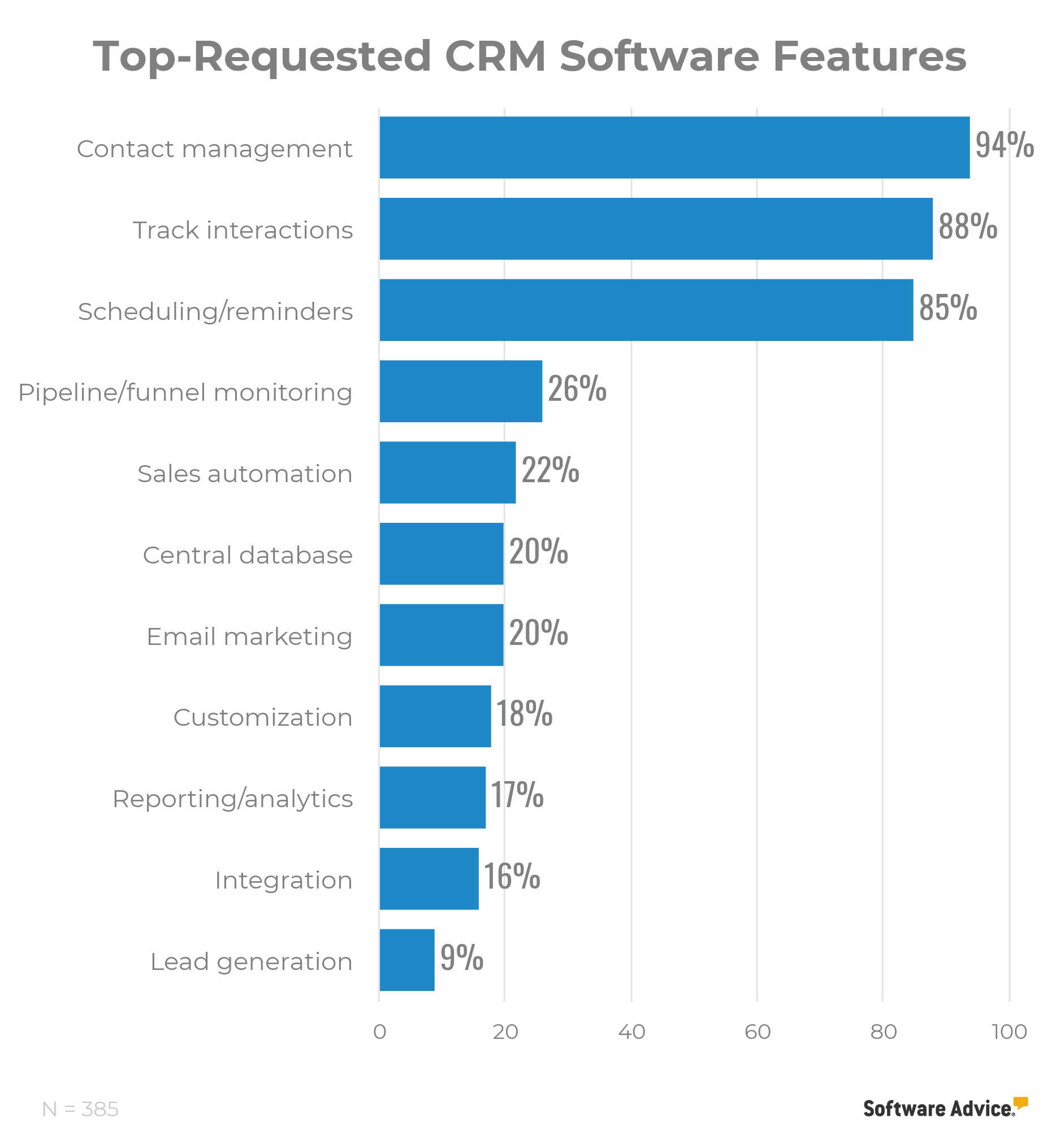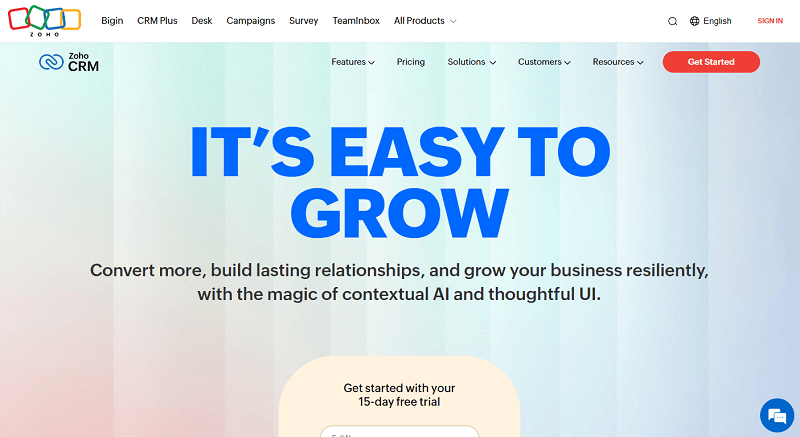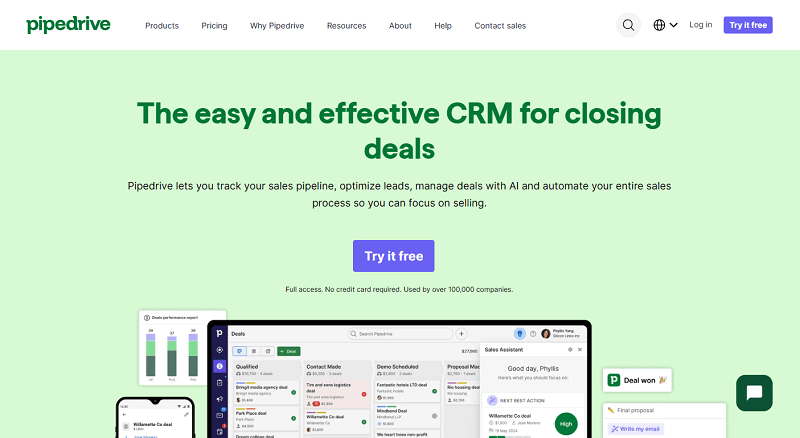Have you missed a date night before because you were stuck entering customers’ data on an Excel sheet?
This is just a typical scene out of the many others that frustrated businesses before the advent of CRM software. Plus, the heartbreak that comes with a negative customer review on a popular reviews website. They were just too much to deal with.
Beyond the ability to better manage customer relationships, the introduction of CRMs brought peace of mind to business owners and founders. They no longer have to worry about missing customer data, loss of files, customer engagement, and employee productivity for the first time.
CRM takes care of them all.
Check out our CRM statistics below to discover how to leverage it for massive business growth.
CRM Statistics - Top Picks

- The global customer relationship management market size was valued at USD 43.7 billion in 2020 and is expected to expand at a compound annual growth rate (CAGR) of 10.6% from 2021 to 2028 (Grandview)
With an annual growth rate of 10.6%, CRMs will become the norm in the near future. And the best part is that it’s not slowing down anytime soon. - The emergence of serverless computing and hybrid cloud computing, and the availability of various service models such as SaaS, Infrastructure as a Service (IaaS), and Platform as a Service (PaaS) are projected to drive the CRM market growth over the forecast period (Grandview)
No technology can drive itself, no matter how excellent or impeccable it is. For CRMs, the SaaS, IaaS, and PaaS drive its growth, among others. These models are the anchor frameworks on which all CRMs are built. - The top industries using CRM are banking & financial services, manufacturing, Telecommunications & IT, Retail and consumer goods, healthcare, and transportation and logistics (Grandview)
Grandview’s research shows that service-oriented industries are the top users of CRMs mainly because it helps them maximize up-sell and cross-sell activities and helps in sales reporting. - The global customer relationship management (CRM) market is projected to grow from $58.04 billion in 2021 to $128.97 billion in 2028 at a CAGR of 12.1% (Fortune Insights)
The rise in the global growth rate of the CRM market is attributed to market demand. This demand is primarily triggered by the pandemic and its disruption of business activities. So, in the process of rebuilding, many organizations are turning to CRM.
CRM Key Statistics
-
Larger enterprise groups preferred cloud deployment to on-premise (Nucleus)
It is no secret that large enterprise groups would prefer cloud deployment over on-premise. As much as on-premise deployment gives the enterprise complete control over its infrastructure, it is still limited. It doesn’t update new features, and it has a growth threshold. -
For every dollar a company spends on CRM, it gets back $8.71 – 1.5 times more than it got just three years ago (Nucleus)
Companies continue to invest in CRM to enhance their customer relationships, sales, and marketing – which are all great reasons. However, in the Nucleus study, they found out that the average returns on CRMs have increased since 2011 from $5.60 to $8.71. -
Cloud delivers 1.7 times more ROI than on-premise CRM (Nucleus)
When companies move their CRM to the cloud, they’ll be able to take advantage of the Cloud ROI multiplier effect because access to the cloud means access to new features and an expanded usage level with little cost. -
North America and Europe are the fastest-growing regions in the CRM global market (Grandview)
In North America, the U.S. had the largest share of 90% in 2020. This growth rate in the U.S. is accredited to several key players in the CRM space in their country. -
50% of teams improved their productivity by using a mobile CRM (Forrester)
Among the many unique benefits of mobile CRM to sales and marketing, one that stands out is that it lets them maintain customer communication on the go. Forrester survey reports that 50% of teams improved their productivity by using a mobile CRM. -
Salesforce has a 20% share of the overall CRM market (Spring Engage)
With over 150,000 customers worldwide, Salesforce is unarguably the king in the CRM Market. They also discovered that customers see a 25% revenue increase after switching to Salesforce CRM. -
73% of customers point out that experience is an important factor in their purchasing decision, behind the price and product quality (PWC)
The thing is, customers are willing to pay more for superior customer experience and service. Using a CRM, organizations increase their chances of delighting their customers through service personalization and instant support. -
Sales reps saw productivity increase by 26.4% when adding social networking and mobile access to CRM applications (Nucleus)
According to recent research by Nucleus, based on responses from over 220 CRM decision-makers, adding social media to their CRM increases productivity by 26.4% and customer service experience. -
CRM is known to improve customer retention, by as much as 27% (TrackVia)
Some critical tools within a CRM to improve customer retention are email campaigns, up-sells based on segmentation, telephony, and text marketing. All of which might be difficult to use in a traditional system. -
Conversion rates can rise by up to 300% using CRM (IBM)
Getting qualified leads is the second battle of the sales team. The primary struggle lies in converting those leads into paying customers and signing off big bucks in revenue. And guess what… with CRM, you can improve your conversion rates by up to 300%.
CRM User Adoption Statistics
- Industry estimates suggest that around 91% of organizations with more than 10 employees in their workforce use CRM systems (Grandview)
Organizations are now beginning to see the need to amplify their sales, marketing, and customer service efforts with a CRM. And guess that, in the near future, it might get to 99 or even 100% user adoption rate. - 82% of the organizations surveyed use CRM systems for sales reporting and process automation (Grandview)
Grandview recently surveyed that 82% of organizations use CRM systems for sales reporting and process automation. This clearly shows that organizations are prioritizing revenue generation and productivity. - When adopting CRM, people want specific features (Software Advice)
CRMs usually have multiple sales and marketing functionalities. However, according to research, the top features requested are contact management, interaction tracking, scheduling, pipeline monitoring, and sales automation. - 22% of all reported problems to successful CRM implementation were people-related or linked to user adoption (Forrester)
Naturally, people fit what they don’t understand. And it’s no different from CRM usage. CRM is only a tool and will either produce better results or problems based on user adoption. - Senior executives explained that their biggest challenge was getting their staff to use the software (Really Simple CRM)
Sometimes, it’s challenging to get your sales team to use your CRM, even after senior executives incur all implementation expenses. It’s a challenge you can overcome with the strategies listed here.
Social CRM Statistics
- 78% of salespeople who engage in social selling are outperforming their peers (Optinmonster)
You’ve probably this famous phrase from marketing experts, “be where your customers are”. Since most customers hang out on social media platforms, salespeople must engage them on their favorite platforms. - During the COVID-19 pandemic, digital sales grew by 18% and 14% of shoppers now rely on social media for purchases (Deloitte)
The pandemic compelled almost everyone to stay at home during the pandemic outbreak. Not only that, the rate of social media increased significantly, resulting in a simultaneous increase in digital sales. - Around 92% of companies tweet at least once a day (Social Pilot)
According to a survey by SocialPilot, around 92% of companies tweet at least once a day. This survey is a clear pointer that most companies are embracing social CRM to strengthen their customer relationships. - 64% of Twitter users expect a response from companies within an hour (Hubspot)
Gone are the days when customers would email companies and expect replies in about a day to now. Times have changed. Customers now expect an instant response from brands, at most an hour. - 21% of customers follow brands on social media to interact with them (Marketing Charts)
The thing is, we are all guilty of this one. When we buy a product from a company and are impressed by the product, more often, we tend to follow its handle to keep up with its other products. And possibly interact with them if we have concerns. - The increase in productivity associated with social CRM capabilities is 8% (SuperOffice)
The role of social media in enhancing customer relationships is becoming increasingly important with each passing day. That’s why there’s an 8% increase in productivity associated with CRM capabilities.
CRM Benefits Statistics
-
Effective sales organizations are 87 percent more likely to be consistent users of CRM or another system of record (Nutshell)
In a world where customers are consistently demanding more from their favorite brands, to be effective, this survey suggests that 87% of the sales team is likely using a CRM or a similar system. -
69% of customers expect a connected experience when they engage with a company (Salesforce)
Customers will always have expectations. It’s left for their brands to either meet up to their expectations or lose them to their customers. 69% of the Salesforce survey respondents say they expect a connected experience when engaging with a company. -
The ROI of a CRM software system, when properly implemented, can exceed 245% (IBM)
Before any company executive approves an expenditure, the first consideration is whether the ROI could be worth it. When it comes to CRM, a significant ROI is specific when appropriately implemented.

-
CRM solutions are now being integrated and consolidated into bigger product ecosystems for a seamless workflow (PCMag)
Seamless workflow is a prerequisite for productivity. It is no secret that CRM solutions are now being integrated with other ecosystems like ERPs and cloud platforms to achieve seamless workflows. -
30. 39% of business leaders say that a high-quality customer experience provides an advantage over the competition, which can be accomplished through CRM seamlessly (Impact)
Customer experience is increasing, becoming the primary need of every customer. Even price won’t save a brand with poor customer service in 2022 and beyond. A recent survey by Impact reveals the critical role that CRM plays in giving a company a competitive advantage over its customers.
HubSpot CRM Statistics

- HubSpot’s current valuation is approximately $26.97 billion (Macroaxis)
- HubSpot has over 121,000 customers across 120 countries (HubSpot)
- HubSpot is the best CRM Software for inbound marketing strategy (Digital22)
Zoho CRM Statistics

- Zoho has an estimated market value of between $5 billion – $15 billion (Fubbi)
- Zoho CRM delivers the highest value in today’s CRM market, with 92% of customers saying that the product delivered good value for the price. (TrustRadius 2021)
- Zoho has over 150,000 customers in 180 countries
Freshsales CRM Statistics

-
Freshsales current valuation is approximately $13 billion (LiveMint)
-
Freshsales has over 52,000 customers in 120 countries
Monday CRM Statistics

-
Monday CRM’s current valuation is approximately $1.6 billion
-
Monday CRM is serving 128, 000 customers globally
Frequently Asked Questions
There are a handful of CRM benefits for businesses, but a few stand out. CRM helps businesses with better segmentation, customer retention, customer service, better communication, data protection, and process automation.
It helps marketing by providing actionable insights that facilitate marketing activities. Marketers also enjoy using CRM for lead acquisition and management.
All types of businesses can use CRM, provided they interact with customers either directly or indirectly. Non-profits, freelancers, and public corporations also use CRM to manage their operations.






























